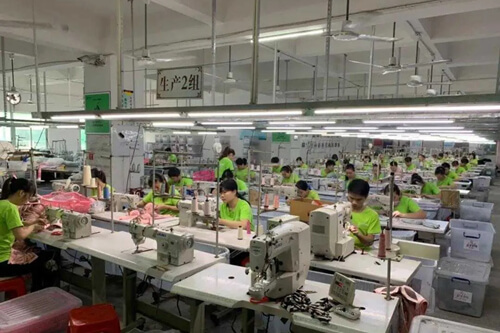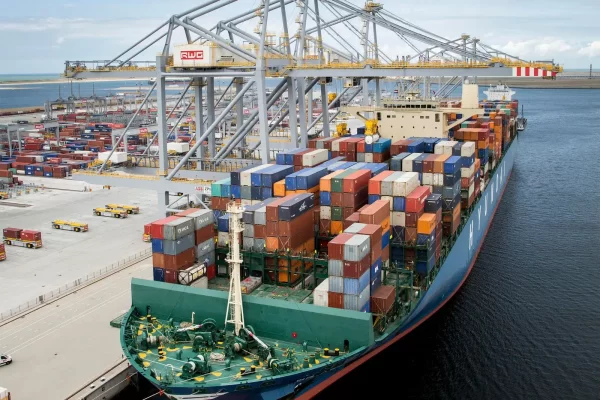The True Cost of a $5 Bra: A Manufacturer's Breakdown of Hidden Lingerie Costs?
You see a bra priced at $5 from a supplier and think you've found a golden ticket to high profit margins. But when the final invoice arrives, loaded with unexpected fees, that golden ticket starts to look like a trap.
A $5 factory price for a bra is achieved by using the most basic materials, simplified construction, and massive production volumes. However, this price often excludes hidden costs like development fees, higher defect rates, packaging, and logistics, which can inflate your true landing cost significantly.

That $5 price tag is incredibly tempting. It allows you to imagine a healthy markup and a successful product line. But as a manufacturer with decades of experience, I can tell you that the initial quote is rarely the final price you pay. Understanding the entire cost structure, especially the parts that aren't immediately obvious, is the key to protecting your budget and ensuring your lingerie brand is actually profitable. Let's break down where every penny really goes.
The Tip of the Iceberg: Are You Only Looking at Material and Labor?
A supplier gives you a simple cost breakdown: $2.50 for materials and $2.50 for labor (Cut, Make, Trim). It seems straightforward. But what exactly is included in that $2.50 for materials, and what efficiencies is the factory using to get labor that low?
The initial FOB (Free on Board) price you receive primarily covers basic fabric, standard elastic, and the direct labor for sewing. It often assumes the simplest construction, no special finishes, and excludes the pre-production work that goes into making a quality garment.

Many new brand owners fall into this trap. They compare quotes from different factories based on that single FOB number. I once worked with a client who chose another factory because their quote was $0.50 cheaper per piece. They came to us six months later, frustrated because their "cheaper" partner charged them extra for every little thing: sample revisions, fit model fees, even for using a slightly better quality thread. Their final cost was much higher than our original quote. At HAVING (China) Ltd., we believe in transparency. Our "body-before-fabric" philosophy means we know that quality inputs are essential. We break down the costs upfront so you can see exactly what you're paying for, from the quality of the lace to the skill of the sewer.
What Your Initial Quote Really Covers
The basic FOB price is just the starting point. It's built on a foundation of assumptions designed to produce the lowest possible number.
- Fabric: This usually assumes a standard, mass-market fabric like basic polyester or low-grade cotton. It does not account for premium materials like Modal, high-quality microfiber, or certified sustainable fabrics.
- Trim: This includes the absolute essentials – standard hook-and-eye closures, basic straps, and rings/sliders made of plastic or a base metal alloy. Any coated, branded, or higher-quality hardware will be extra.
- Cut, Make, Trim (CMT) Labor: This is the direct cost of cutting the fabric and sewing the garment. To reach a low price, factories assume a very simple design with a low stitch count and minimal components, produced in a long, continuous run to maximize efficiency.
The visible costs are designed to be attractive, but the real story is in what's left out.
| Cost Component | What a '$5 Bra' Quote Includes | What a Quality-Focused Quote Includes |
|---|---|---|
| **Fabric** | Basic polyester/nylon blend | Specified materials (e.g., OEKO-TEX® certified microfiber, GRS recycled fabric) |
| **Labor (CMT)** | Simplified sewing process, minimal stitches | Complex construction, reinforced seams, higher stitch count for durability |
| **Trims** | Plastic hardware, basic hook-and-eye | Coated metal hardware, soft-backed hook-and-eye, branded elements |
The Hidden Factory Costs: Is "Cheaper" Actually More Expensive?
You’ve approved the basic quote. But as production nears, a list of new charges appears. Fees for samples, lab dips, and quality control you thought were included. Why does this happen?
Many low-cost quotes externalize crucial pre-production and quality assurance steps, presenting them as optional add-ons. These hidden factory costs can include sample development, material testing, rigorous quality control, and individual packaging, all ofwhich are essential for a high-quality retail product.

A brand’s success is built on consistency and quality, and that is forged during the development stage. Sacrificing this stage to save a few cents per unit is a recipe for disaster. I've seen brands get stuck with thousands of units in a color that was slightly off, all because they declined to pay a $100 lab dip fee. Or worse, receiving a shipment where 15% of the units have minor sewing defects because they opted out of a dedicated final inspection. These "savings" are incredibly expensive in the long run. We offer comprehensive OEM/ODM services, and we know that these "extra" steps aren't extra at all; they are fundamental to creating a product that won't get returned and will build brand loyalty.
Uncovering the Necessary "Extras"
These are the costs often left out of a teaser quote but are essential for a successful production run.
- Product Development & Sampling: The initial pattern, grading for different sizes, and creating multiple rounds of samples to perfect the fit is a skilled, labor-intensive process. A low-cost factory will charge for every single iteration.
- Material Sourcing & Testing: Sourcing and verifying specific materials (like our GRS-certified recycled fabrics for sustainable swimwear) costs time and money. Lab dips to ensure color consistency are also a critical, and often separate, charge.
- Quality Control (QC): A basic quote may only include a simple factory self-check. A proper QC process, with dedicated inspectors checking a percentage of the production run (an AQL inspection), is a separate but vital service to ensure you don't receive a container of defective goods.
- Packaging: Are you just getting your bras in a bulk polybag, or do you need individual branded hangtags, hygienic liners, and custom retail-ready bags? Each of these adds to the final unit cost.
Costs Beyond the Factory Gate: Have You Calculated Your Landed Cost?
The bras are finished, packed, and look great. The factory invoice is paid. You're done, right? Not even close. Getting the product from the factory floor in China to your warehouse involves a whole new set of complex costs.
Your final "landed cost" includes the factory price plus shipping, insurance, import duties, and local transportation. For lingerie imported into the US or Europe, tariffs alone can add a significant 16-20% to the cost, a shock for many first-time importers.

This is the final hurdle where profit margins can be won or lost. I often advise our clients, especially those new to importing, to work with a good freight forwarder or customs broker. They can provide an accurate estimate of these "post-factory" costs. Forgetting to budget for tariffs is one of the most common and painful mistakes a new brand can make. A $5 bra can easily become a $6.50 bra before it even reaches your warehouse, completely changing your financial projections. As a manufacturer in Shantou City, Guangdong, we are located near major ports, which helps streamline logistics, but the final import costs are something every brand must own and calculate.
From FOB to Your Warehouse Door
Calculating your true landed cost is essential. Here's a simplified look at the journey.
| Cost Stage | Description | Estimated % of FOB Price |
|---|---|---|
| **FOB Price (The "$5 Bra")** | The price to get the goods to the port of departure. | 100% (Base) |
| **Freight & Insurance** | Cost of ocean or air shipping and insuring the goods against loss or damage. | 5-10% |
| **Customs & Tariffs** | Taxes and duties levied by the destination country. Highly variable. | 10-25% (for US/EU) |
| **Local Handling & Delivery** | Port fees, customs brokerage, and trucking to your warehouse. | 3-5% |
| **Estimated Landed Cost** | The true, final cost per unit. | ~120-140% of FOB Price |
Conclusion
The allure of a $5 bra is strong, but true profitability comes from understanding the entire picture. By looking beyond the initial quote, you can build a sustainable and successful lingerie brand.
Frequently Asked Questions (FAQ)
1. What does FOB price mean in manufacturing?
FOB stands for "Free On Board." It means the price quoted by a manufacturer includes all costs to produce the goods and deliver them to the designated port of departure. The buyer is responsible for all costs from that point onwards, including shipping, insurance, and import duties.
2. How do I calculate the landed cost of a product?
To calculate the landed cost, you start with the product cost from the supplier (the FOB price), then add shipping costs, customs duties, tariffs, insurance, and any local transportation or handling fees. The formula is: Landed Cost = Product Cost + Shipping + Customs + Insurance + Overhead.
3. What is a reasonable defect rate for lingerie production?
While the goal is zero defects, a commonly accepted defect rate in the garment industry, based on AQL (Acceptable Quality Limit) standards, is around 2.5% for major defects and 4.0% for minor defects. A very low-cost supplier may have a much higher actual defect rate.
4. How can I reduce my lingerie manufacturing costs without sacrificing quality?
You can reduce costs by simplifying designs (fewer seams and components), ordering larger quantities to benefit from economies of scale, choosing high-quality but cost-effective materials like microfiber instead of silk, and working with an experienced manufacturer who can optimize patterns to reduce fabric waste.
